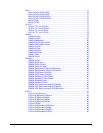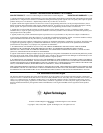
Configuring the Digitizer Modules 13Chapter 1
Chapter 1
Configuring the Digitizer Modules
Using This Chapter
This chapter provides guidelines to configure the E1563A and E1564A
modules and to verify successful installation. Chapter contents are:
• Digitizers Description . . . . . . . . . . . . . . . . . . . . . . . . . . . . . . . .13
• Warnings and Cautions . . . . . . . . . . . . . . . . . . . . . . . . . . . . . .17
• Configuring the Digitizers . . . . . . . . . . . . . . . . . . . . . . . . . . . . .19
• User Cabling Connections . . . . . . . . . . . . . . . . . . . . . . . . . . . .23
• Initial Operation . . . . . . . . . . . . . . . . . . . . . . . . . . . . . . . . . . . .30
Digitizers Description
The E1563A (2-channel) and E1564A (4-channel) Digitizers are 800
kSample/second (14-bit resolution) digitizers capable of handling both
continuous and transient voltages up to 256V. You cannot upgrade an
E1563A 2-Channel Digitizer to an E1564A 4-Channel Digitizer.
General Information Both the E1563A and E1564A digitizers are register-based instruments that
can be programmed at the register level (see Appendix C) or at a higher
level using SCPI or VXIplug&play drivers.
The digitizers are ideal for measurements in electomechanical design
characterization, particularily in environments with high levels of electrical
noise and for characterizing electronic and mechanical transient waveforms.
The E1563A 2-Channel Digitizer has a fixed 25 kHz input filter per channel
that can be enabled. The E1564A 4-Channel Digitizer has four selectable
input filters per channel (1.5 kHz, 6 kHz, 25 kHz and 100 kHz) that can be
enabled.
The E1564A 4-Channel Digitizer has a calibration bus output (High, Low and
Guard) and a programmable short. The E1563A 2-Channel Digitizer does
not have a calibration bus output. However, a programmable short is
provided for each channel. An external calibration source must be provided
for calibration.
Both digitizers use PC SIMM memory. Memory sizes that are supported are
4, 8, 16, 32, 64 and 128 Mbytes. The large memory can easily capture
transients or act as FIFO to allow continuous digitizing while unloading data
with block mode transfers.


















